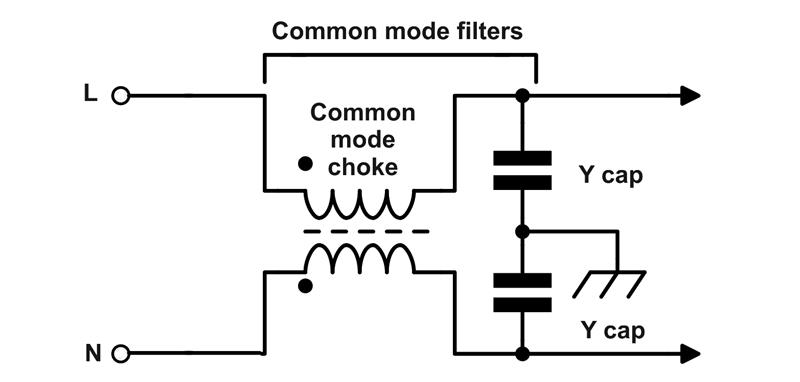EMC pre-compliance and common mode chokes for cost optimised compliance
Fidus Power now offer a range of affordable common mode chokes, to accompany the complementary EMC pre-compliance service to keep your design on track.
To assist in the confidence of our products in your design, we offer pre-compliance services at every stage of your project. Power supplies contribute to the emissions of a system but are not always the cause of the problem. Please see this previous article for more information. With our expert knowledge we can shortcut the painful process of resolving EMC issues, accelerating your project to completion with cost optimised solutions or advice where necessary.
One of the powerful tools of filtration is the common mode choke. It tackles frequencies that exist on both line and neutral and finds its way to earth. The humble common mode choke is an ingenious design that uses equal and opposite magnetic flux, produced by the two windings on a common core to filter noise frequencies that are present on both line and neutral. They are always found in IEC filters along with Y capacitors that are also effective for common mode noise suppression, since they filter frequencies that find their way to earth.


Selecting which common mode choke for your application, primarily depends on the current the application requires and the frequency that requires “attenuation” or suppression that is the cause of the EMC failure.
They are more prominent for radiated mitigation effective above 30MHz, since a great deal of low frequency noise is differential bourn (found on one of the phases). Differential noise can represent itself as common mode noise though parasitic capacitance between conductors, windings and heatsinks. All common mode chokes have a differential component (parasitically) that can be used as a two-pronged attack on the offending frequencies. This means that in the conducted EMC compliance spectrum, 150kHz to 30MH for the standard EN55032 (EN55011 for medical), and 0-10MHz for MIL-STD 461F, they are most applicable. Below is a typical attenuation curve for a common mode choke, showing its intended common mode attenuation and its differential mode attenuation.

The material that the core of the choke is made from greatly affects the frequencies that it is optimised to. Manganese-Zinc for lower frequencies, Nickel-Zinc for higher and a combination of both (or nanocrystalline) for broad band attenuation. The nanocrystalline provides excellent performance in a much more compact form factor and is useful if adding retrospectively to designs where space is tight.
Below is a plot from a real-life example showing the quasi-peak (light blue) and average (dark blue) plots of line phase of an IOT device. The limit lines are for level B (the more stringent required for domestic and light commercial), quasi and average shown in red and purple respectively.

The quasi-peak plot was just over the limit line at the lowest frequency (150kHz), so some mitigation was implemented to correct the conducted emission performance, to a more certain pass level.
The FL2D-10-203 common mode choke was chosen because of its common mode attenuation performance in lower frequencies, current handling capability and compact package. Below is the products performance curve shown in dark blue:


After fitting the choke, the performance was enhanced to a level where a conducted emission pass would not be questionable, with a drop of about 20dB in the area of concern:

The FL2D range of common mode chokes facilitate systems with current draws of up to 40A, offering a minimum isolation of 1500VAC, designed to meet UL508 isolation requirements.
If you have an application that the FL2D range sounds suitable for and would like to evaluate a sample, please get in touch with your Fidus Account Manager or call us on 0118 3420730.
